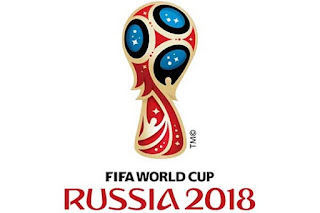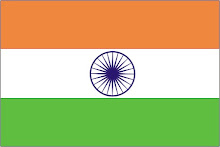Nirav Modi. You might not have heard his name until a week back.
Yet today, he finds himself in the center of a massive storm engulfing the Indian Banking system. Caught in the whirlpool are the biggest banks in India - PNB, SBI, Axis Bank, UCO Bank, Allahabad Bank.
So what exactly is the Nirav Modi - PNB scam?
 |
| Where is the money? |
Consider things like this.
The parties involved :-
1. The Importer :- Nirav Modi is in India and an importer of uncut diamonds and other precious stones, in the business of creating jewelry out of them.
2. The Exporter :- The exporter is somewhere across the world - say in a diamond hub like Belgium or a trading hub like Hong Kong. He will export his stuff to Modi.
The export-import transaction between Modi and his exporter would need to pass through banks.
3. The Importer's Bank :- Modi approaches a bank in India - in this case Punjab National Bank (PNB) - to issue a Letter of Credit (LC) (This is different from the Letter of Undertaking) in favor of the exporter.
The Letter of Credit mentions the importer, the exporter, the goods to be shipped, the amount payable and the payment terms ( say full payment after 180 days).
PNB issues a Letter of Credit, promising to pay the exporter if the exporter ships the good as per the terms and conditions, and the importer does not pay.
PNB does not hold any direct liability in issuing this LC. It holds a contingent liability ( contingent to Modi paying the exporters as per the terms of conditions). To secure itself against the contingent liability, PNB seeks collateral from Modi.
PNB earns fees for issuing the LC.
The Letter of Credit is then sent to a bank in the exporter's country - say UCO Bank, HK.
4. The Exporter's Bank :- The exporters bank advises the exporter of the receipt of the letter of credit. The bank does not hold liability for advising the letter of credit. It typically earns fees for this advising.
This entire process of Letter of Credit is a regular process for Trade Finance. Every days - lakhs of Letters of Credits are issued by banks across India favoring exporters across the world. The reverse also happens very extensively. Millions of Letters of Credits are issued by foreign banks in favor of exporters in India.
The movement of Goods and Money :-
1. The exporter, after receiving the LC ships the goods to the importer (read Modi).
2. The exporter sends a bill to the Exporter's Bank( say UCO Hong Kong) , which in turn forwards it to Modi's Bank ( PNB ). PNB sends the bills to Modi for payment. The payment is due within 180 days.
3. On the due date, Modi says that he cannot pay the bill and needs a credit facility to repay the exporter.
4. Borrowing money in India will attract a rate of say 12%. Borrowing money in HK will attract a rate of say 4%. Modi decides to borrow in HK.
But who will give loans to Modi in HK, while Modi is in India?
This is where the Letter of Undertaking (LOU) and Buyers Credit come into picture.
The Buyers Credit and Letter of Undertaking (LOU) :-
1. An Indian bank's foreign branch ( say UCO HK ) agrees to give a loan to Modi , if his bank in India (PNB, India) gives a Letter of Undertaking (LOU).
2. A Letter of Undertaking is an assurance ( a guarantee) given by PNB India to UCO HK that Modi is known to them and they will pay if Modi does not pay.
3. PNB issues a LOU to UCO HK.
PNB does not hold any direct liability in issuing this LOU. It holds a contingent liability ( contingent to Modi paying the bank issuing the buyers credit as per the terms of conditions). To secure itself against the contingent liability, PNB seeks collateral from Modi.
3. UCO HK gives a buyers credit (a loan), with Modi as the borrower. (remember Modi is a buyer in the original transaction).
4. The money from the loan is used to pay to the exporter.
5. The importer (Modi) is expected to pay the loan as per the agreed terms and conditions
Once again - this entire process is a regular process in the world of Trade Finance, practiced by all banks across the world. Buyers Credit are permitted by the RBI to allow importers access to cheap global funds to meet the working capital needs. RBI stipulates a limit on the amount on the borrowing by a commercial entity (US$ 750 Million) and a limit on the term of the borrowing (say 5 years)
Once again - this entire process is a regular process in the world of Trade Finance, practiced by all banks across the world. Buyers Credit are permitted by the RBI to allow importers access to cheap global funds to meet the working capital needs. RBI stipulates a limit on the amount on the borrowing by a commercial entity (US$ 750 Million) and a limit on the term of the borrowing (say 5 years)
6. If the importer does not pay on the due date , two things can happen :-
-- The bank giving the Buyers Credit (say UCO HK) seeks money from the Bank which gave the LoU (say PNB) OR
-- The importer talks to the bank which gave the LoU (say PNB) and seeks an extension.
Once again - all this is standard business practice.
So if everything is as per the standard business practice, where did things fails?
Things failed when PNB issued LOU's to the foreign branches of Indian Banks like UCO HK, Axis Bank, SBI Bank , Allahabad Bank and Union Bank.
Here is the modus-operandi in the scam :-
When a LOU is issued, there are three broad steps :-
1. Collateral is collected from the importer to secure the bank against default. (some of the collateral is in cash, while the other is not in cash - say a property ).
2. A LOU is issued in the bank's core banking system.
3. The LOU is transmitted in electronic form using the SWIFT messaging system to the foreign bank.
Instead of following the standard operating procedure, people cheated the banks as below :-
1. Collateral was not collected from the importer before issuing the LOU, or only a part of it was collected. Such unsecured LOUs exposed PNB to risks.
2. LOU was not issued in the core banking system. As a result, the information about heavy LOUs being issued by PNB were not visible in the bank's balance sheet to the bank's management. Disproportionate LOUs to a single party, extended year after year, exposed PNB to risk.
3. The LOU was electronically transmitted directly from the SWIFT system, instead of it originating from the Core Banking System. The direct access is provided , usually, to manage exigencies. This direct transmission ensured that audits in the Core Banking System did not detect anomalies in the LOUs, thereby exposing PNB to risk.
4. Bank branches in foreign countries extended loans based on the LOU. They did not have means to assess the genuineness of the LOU, considering that they came through the SWIFT system. In short, they were hoodwinked.
Who is at risk in this scam?
1. The foreign branches of Indian Banks who have advanced loans are the ones with the biggest risk. They are out of funds.
2. These branches have given loans based on LOUs given by PNB. PNB thereby is the guarantor and is at risk.
3. The Indian public is at risk, because many of these banks are Public Sector Banks and are very often funded and capitalized by the janata's money.
What is the size of the scam?
PNB has supposedly issued LOUs upto Rs 11,000 crore without the knowledge of its management.
Different Banks like SBI, Axis, UCO, Allahabad Bank and Union Bank have extended loans against these (fake?) LOUs. Their risks are -
SBI - Rs 1360 Crores
UCO - Rs 2600 Crores
Allahabad Bank - Rs 2300 Crores
Union Bank - Rs 1900 Crores
Axis Bank, luckily, is risk free since it sold the buyer credit (loans) to other banks, much before the scam was known.
Union Bank - Rs 1900 Crores
Axis Bank, luckily, is risk free since it sold the buyer credit (loans) to other banks, much before the scam was known.
Meanwhile, Nirav Modi and co continue to be holed up happily in New York, sipping his green tea, enjoying the nice weather. The Indian investigators are meanwhile contemplating if he is enjoying the Indian khakaras with his tea, or the Belgian waffle.
The Nirav Modi PNB Scam
 Reviewed by Vyankatesh
on
Sunday, February 18, 2018
Rating:
Reviewed by Vyankatesh
on
Sunday, February 18, 2018
Rating:
 Reviewed by Vyankatesh
on
Sunday, February 18, 2018
Rating:
Reviewed by Vyankatesh
on
Sunday, February 18, 2018
Rating:









Thanks for the blog.Nice Nirav Modi pnb scam information.You can also check.
ReplyDeletethe nirav modi pnb scam